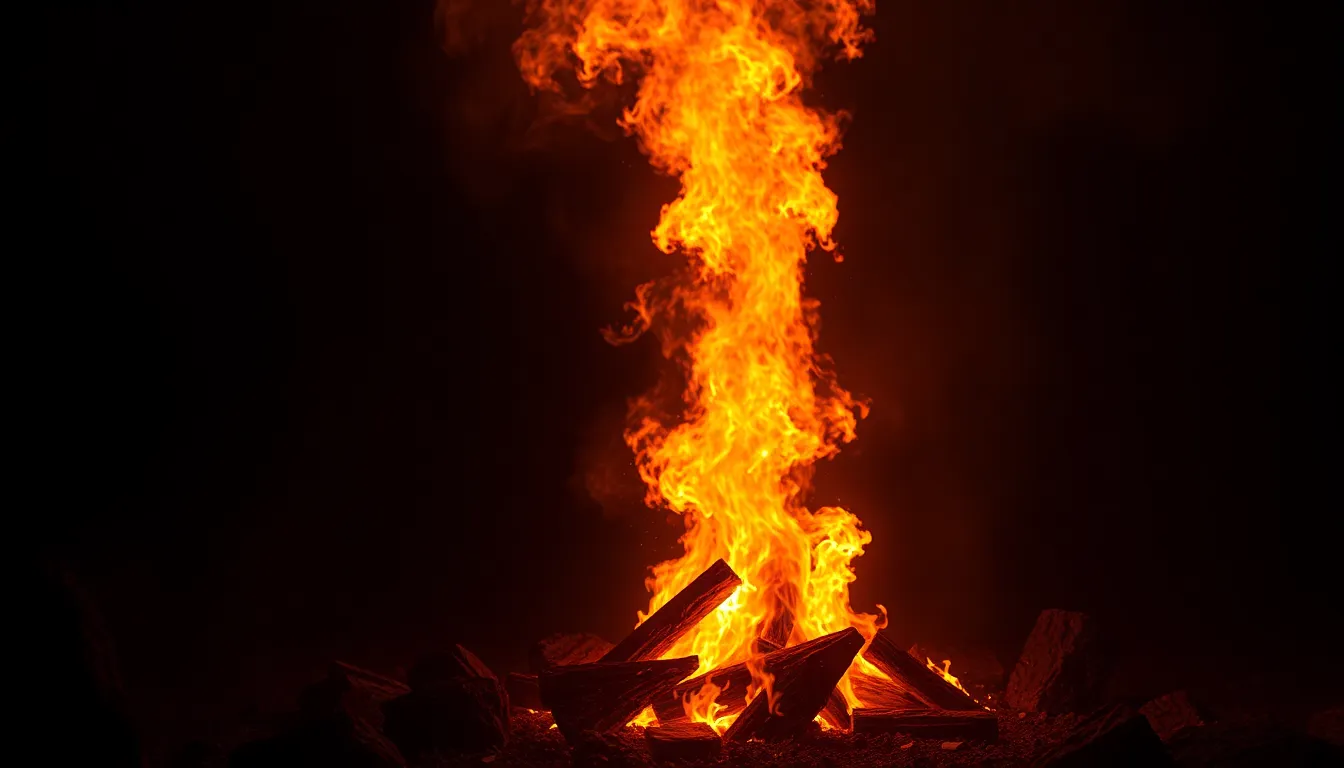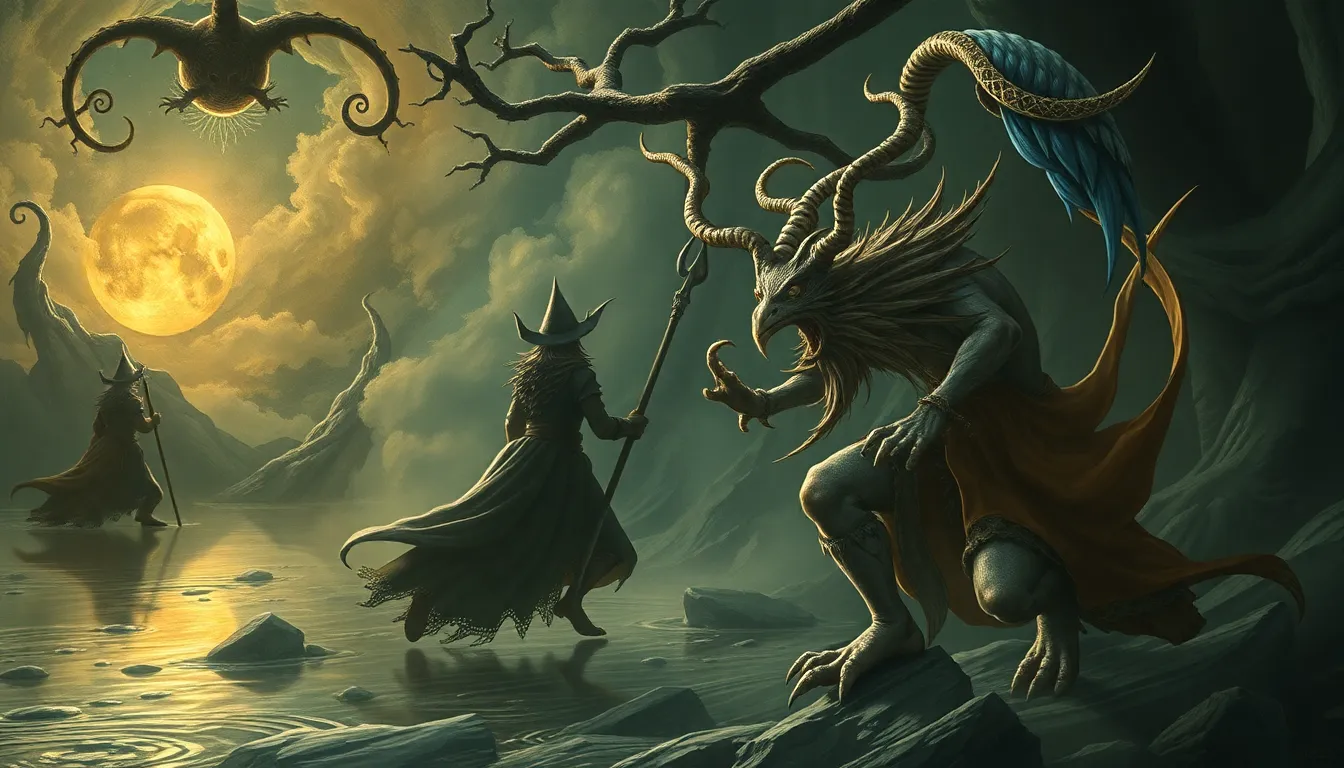The Realm of Thai Mythology
Thai mythology is a rich tapestry of stories woven from ancient beliefs, folklore, and religious influences. These tales, passed down through generations, offer a window into the Thai worldview, where the boundaries between the natural and supernatural blur, and the divine and human exist in close proximity. Thai mythology is a vibrant expression of the Thai people's creativity, imagination, and deep-seated connection to the world around them. It encompasses a vast universe of gods, spirits, mythical creatures, and heroes, each with their own unique stories and roles in the grand narrative of the cosmos. The stories of Thai mythology are not merely entertaining; they serve as a moral compass, offering lessons on virtue, justice, and the consequences of one's actions.
Transformation and Metamorphosis: A Central Theme
Transformations and metamorphoses are recurrent themes within Thai mythology. These stories often explore the fluidity of existence, where boundaries between different forms of life, including human, animal, and divine, are fluid and ever-changing. These shifts in form can be caused by a variety of factors, ranging from divine intervention to the consequences of karma, reflecting a belief in the interconnectedness of all things. The act of changing form can represent various concepts, such as spiritual growth, divine intervention, punishment, or a test of one's character. In these tales, transformation often serves as a catalyst for personal growth, the resolution of conflict, or a reminder of the ever-present power of the supernatural realm.
From Animal to Human: Tales of Divine Intervention
Many Thai myths feature characters who undergo transformations from animal forms to human ones. These stories often involve divine intervention, where gods or spirits take pity on a creature or bestow a gift upon them. The transformation is not simply a physical change but a symbolic act of elevation, highlighting the potential for growth and change within the natural world.
One such tale is the story of Phra Aphai Mani, a prince who is transformed into a fish by an evil sorcerer. This myth explores themes of resilience, perseverance, and the power of love. Another example is the popular legend of Mae Nak Phra Khanong, a spirit who becomes a vengeful ghost after her death. These tales, often grounded in folk beliefs and superstition, serve as cautionary reminders about the importance of respect for the divine and the consequences of one's actions.
The Power of Nature: Spirits and Supernatural Beings
Nature plays a central role in Thai mythology, with spirits and supernatural beings inhabiting forests, mountains, and rivers. They are often personified as spirits of the elements – water spirits, forest spirits, and mountain spirits – each with their own distinct powers and temperament. These spirits can be benevolent or malicious, depending on how they are treated by humans. Their presence reminds humans that they are not alone in the world, and that there is a spiritual dimension that can influence their lives.
The Naga, a mythical serpent-like creature often associated with water, is a prominent figure in Thai mythology. They are believed to guard sacred places and control the flow of water, making them both respected and feared. Other creatures, such as the Yak, mischievous forest spirits, and the Kuman Thong, mischievous child spirits, are woven into the fabric of Thai folklore, adding an element of mystery and intrigue to the landscape.
The Birth of the World: Cosmic Transformation in Thai Myths
Thai mythology offers a unique perspective on the creation of the universe, a process that involves transformation and cosmic evolution. These creation myths often feature a divine being, such as Phra Brahma, who shapes the world from chaos, bringing order and life to the universe. The process of creation is often depicted as a series of transformations, as elements take on new forms and evolve over time.
The story of Phra Phrom (Brahma) highlights the concept of creation from a divine essence, while the Naga plays a vital role in shaping the landscape and controlling the flow of water, symbolizing the power of nature in the birth of the world. These myths, rooted in ancient beliefs about the cosmos, offer a framework for understanding the universe and humanity's place within it.
The Role of Karma: Transformation as a Consequence
Karma, a central concept in Buddhist and Hindu philosophy, plays a significant role in Thai mythology. It is the belief that actions have consequences, and that these consequences can manifest in various ways, including transformations. In many Thai myths, characters who commit wrongdoings face transformations as a form of punishment or retribution. These changes can be physical, where a person is transformed into an animal or a spirit, or they can be psychological, where a person's character or personality is changed.
The tale of Phra Aphai Mani, mentioned earlier, illustrates the concept of karma in action. The prince's transformation into a fish is a consequence of the sorcerer's evil deeds. This story emphasizes the importance of righteous conduct and the potential for suffering when one chooses to act against dharma (righteousness). Similarly, the Naga, often depicted as guardians of sacred places, are believed to be reincarnated humans who have accumulated great merit in past lives, illustrating the transformative power of good deeds.
These stories serve as reminders that our actions have consequences, both in this life and in future lives. They encourage individuals to cultivate virtue and strive for positive change, understanding that every act, whether large or small, contributes to the cycle of karma.
The Moral Compass: Learning from Metamorphosis
Transformation in Thai mythology is not just about physical change; it often carries deeper moral and spiritual implications. These stories serve as moral compasses, highlighting the consequences of good and bad deeds, the importance of virtue, and the power of compassion. They offer lessons on how to navigate the complexities of life, fostering both a sense of personal responsibility and a respect for the interconnectedness of all things.
Many stories showcase the power of transformation to bring about positive change. The tale of Phra Aphai Mani, for example, emphasizes the power of love and resilience in overcoming adversity. Through his journey, the prince learns valuable lessons about perseverance and the importance of embracing change. Similarly, the story of Mae Nak Phra Khanong serves as a reminder of the importance of honoring the dead and the consequences of ignoring societal norms.
The moral lessons embedded within Thai mythology are timeless and relevant to all people, regardless of their cultural background. They provide a framework for understanding the human condition, the power of choice, and the importance of living a virtuous life.
The Influence of Hinduism and Buddhism
Thai mythology is a fascinating blend of ancient beliefs, influenced by both Hinduism and Buddhism. These two major religions have shaped the Thai worldview, contributing to the rich tapestry of myths and legends that form part of Thai culture. Hinduism has contributed concepts like the cycle of reincarnation, the importance of karma, and the existence of a celestial realm inhabited by deities. Buddhist beliefs, such as the Four Noble Truths and the Eightfold Path, have also left their mark on Thai mythology, emphasizing concepts like mindfulness, compassion, and the pursuit of enlightenment.
The figure of Phra Brahma, the creator god in Hinduism, is central to many Thai creation myths. His presence underscores the influence of Hindu cosmology on the Thai worldview. Similarly, the Naga is a figure linked to both Hinduism and Buddhism. In Hinduism, Nagas are associated with the underworld and the guardians of treasure, while in Buddhism, they are often depicted as protectors of the Dharma. The presence of these figures in Thai mythology reflects the historical and cultural interactions between Thailand and its neighboring civilizations.
Transformation in Ritual and Art
Transformation is a recurring theme not only in Thai mythology but also in traditional Thai rituals and art. From elaborate dance performances to intricate temple carvings, these artistic expressions often depict themes of transformation, rebirth, and the cyclical nature of life. These rituals and art forms serve as tangible reminders of the powerful forces at play in the universe, and they offer a glimpse into the Thai people's deep reverence for the divine and the natural world.
Religious ceremonies such as Khao Pad, a rice-planting ritual, embody the theme of transformation. The act of planting rice seeds symbolizes the cycle of life and rebirth, emphasizing the interconnectedness of humans and the natural world. Similarly, the Naga is a prominent figure in many Thai art forms, often depicted as protectors of sacred places or guardians of water sources, representing the transformative power of nature.
The presence of transformation in Thai ritual and art signifies its deep cultural significance, reminding the Thai people of the interconnectedness of all things and the ever-present possibility of change and renewal.
Modern Interpretations and Retellings
Thai mythology continues to inspire and resonate with people in the modern world. Contemporary writers, filmmakers, and artists are reinterpreting and retelling these ancient tales, breathing new life into traditional stories and exploring their relevance in a contemporary context. These modern interpretations often incorporate themes of social justice, environmentalism, and personal transformation, engaging with issues that are relevant to today's audiences.
Modern adaptations of Thai mythology often use familiar characters and story elements in new and innovative ways. For example, the Naga might be depicted as protectors of the environment, highlighting the importance of preserving nature in the face of modern challenges. Similarly, the story of Phra Aphai Mani could be reimagined as a tale of resilience and overcoming adversity in a contemporary setting.
The ongoing reinterpretations of Thai mythology demonstrate the enduring impact of these tales on the Thai people and the potential for these stories to continue to inspire and inform future generations. They serve as a reminder that traditional wisdom can offer valuable insights into the human experience, even in a rapidly changing world.
FAQ
Q1: What are some popular creatures in Thai mythology?
A1: Some popular creatures in Thai mythology include the Naga, a serpent-like creature associated with water; the Yak, mischievous forest spirits; the Kuman Thong, mischievous child spirits; and the Phra Aphai Mani, a prince transformed into a fish.
Q2: How does karma play a role in Thai mythology?
A2: Karma is a central concept in Thai mythology, highlighting the belief that actions have consequences. Characters who commit wrongdoings often face transformations as a form of punishment or retribution.
Q3: What are some examples of Thai myths featuring transformation?
A3: Some examples of Thai myths featuring transformation include the story of Phra Aphai Mani, where a prince is transformed into a fish, and the story of Mae Nak Phra Khanong, where a spirit becomes a vengeful ghost.
Q4: How is transformation portrayed in Thai art and ritual?
A4: Transformation is a recurring theme in Thai art and ritual, often depicted in elaborate dance performances, intricate temple carvings, and religious ceremonies. These artistic expressions symbolize the cycle of life and rebirth, emphasizing the interconnectedness of humans with the natural world.
Q5: How are Thai myths being reinterpreted in modern times?
A5: Contemporary artists, filmmakers, and writers are reinterpreting Thai mythology, often incorporating themes of social justice, environmentalism, and personal transformation, making these ancient tales relevant to modern audiences.



